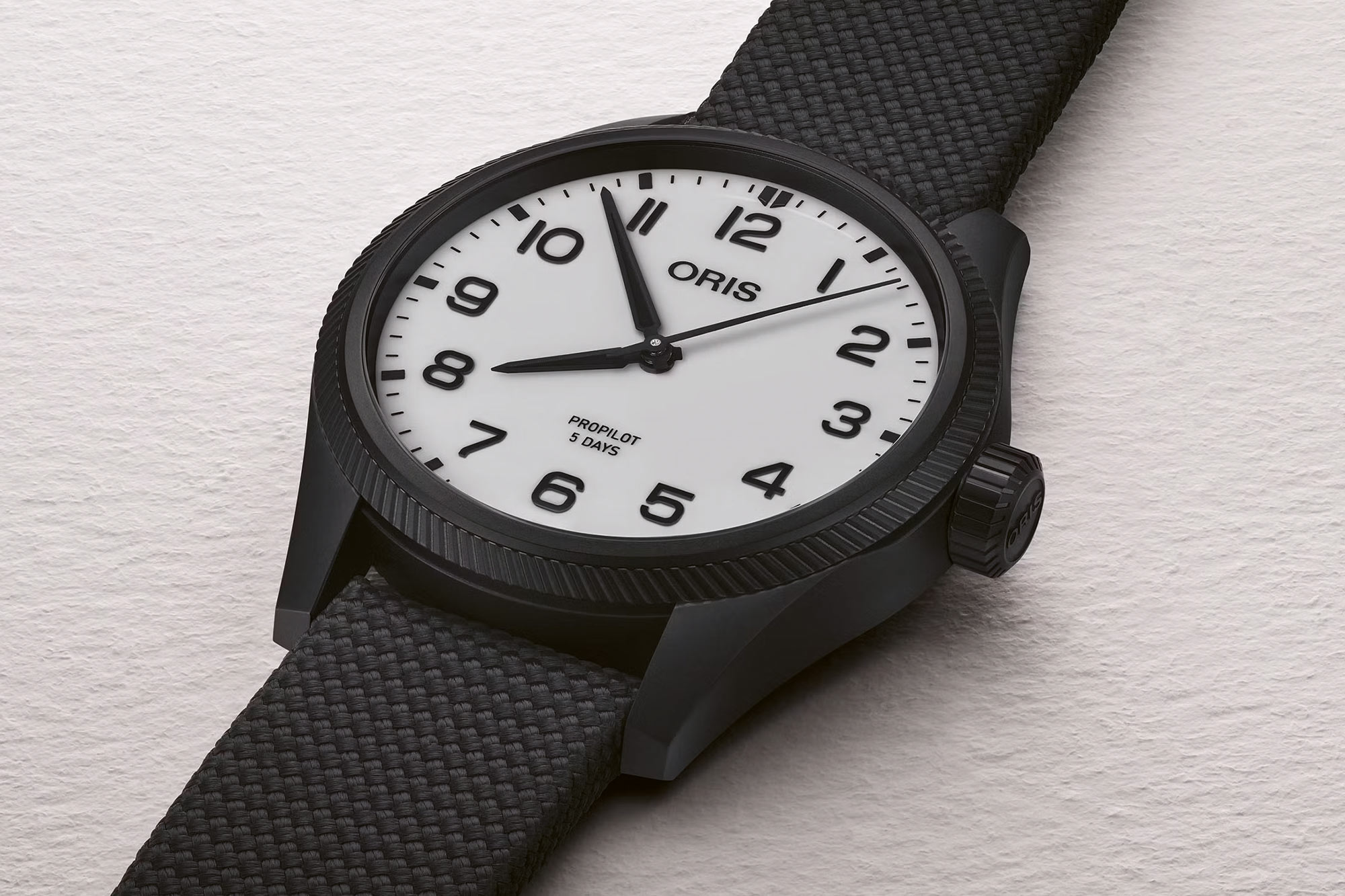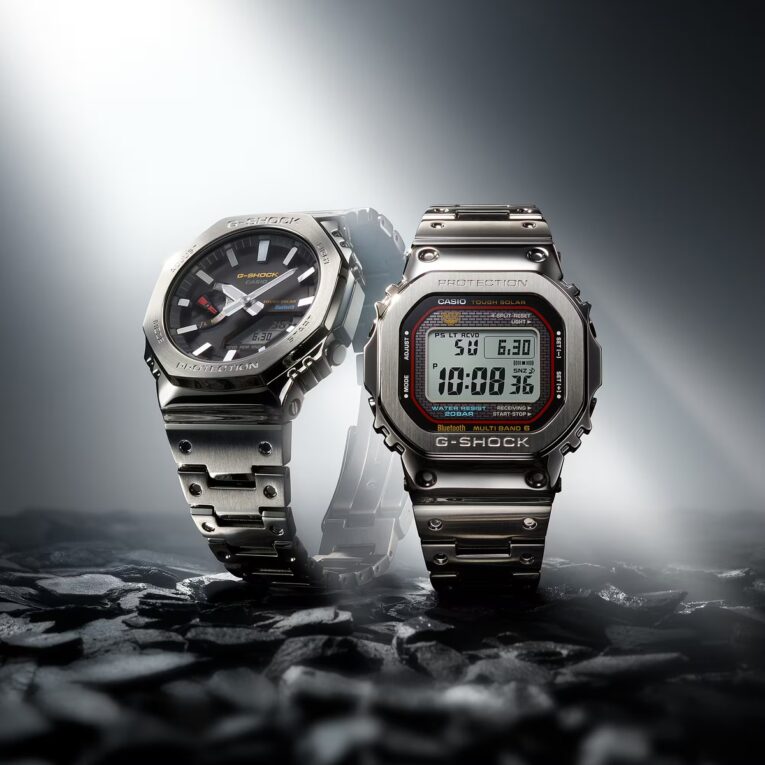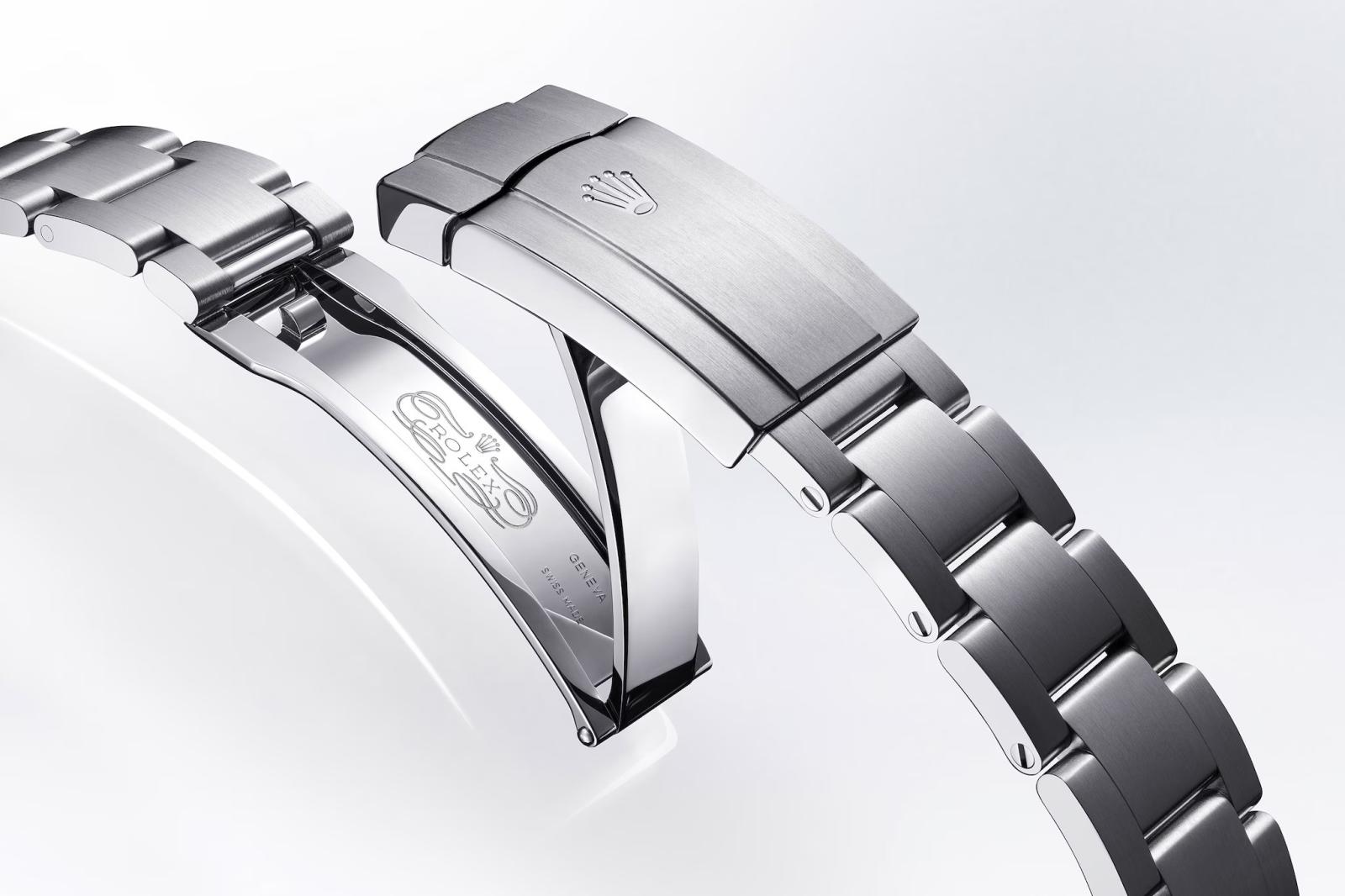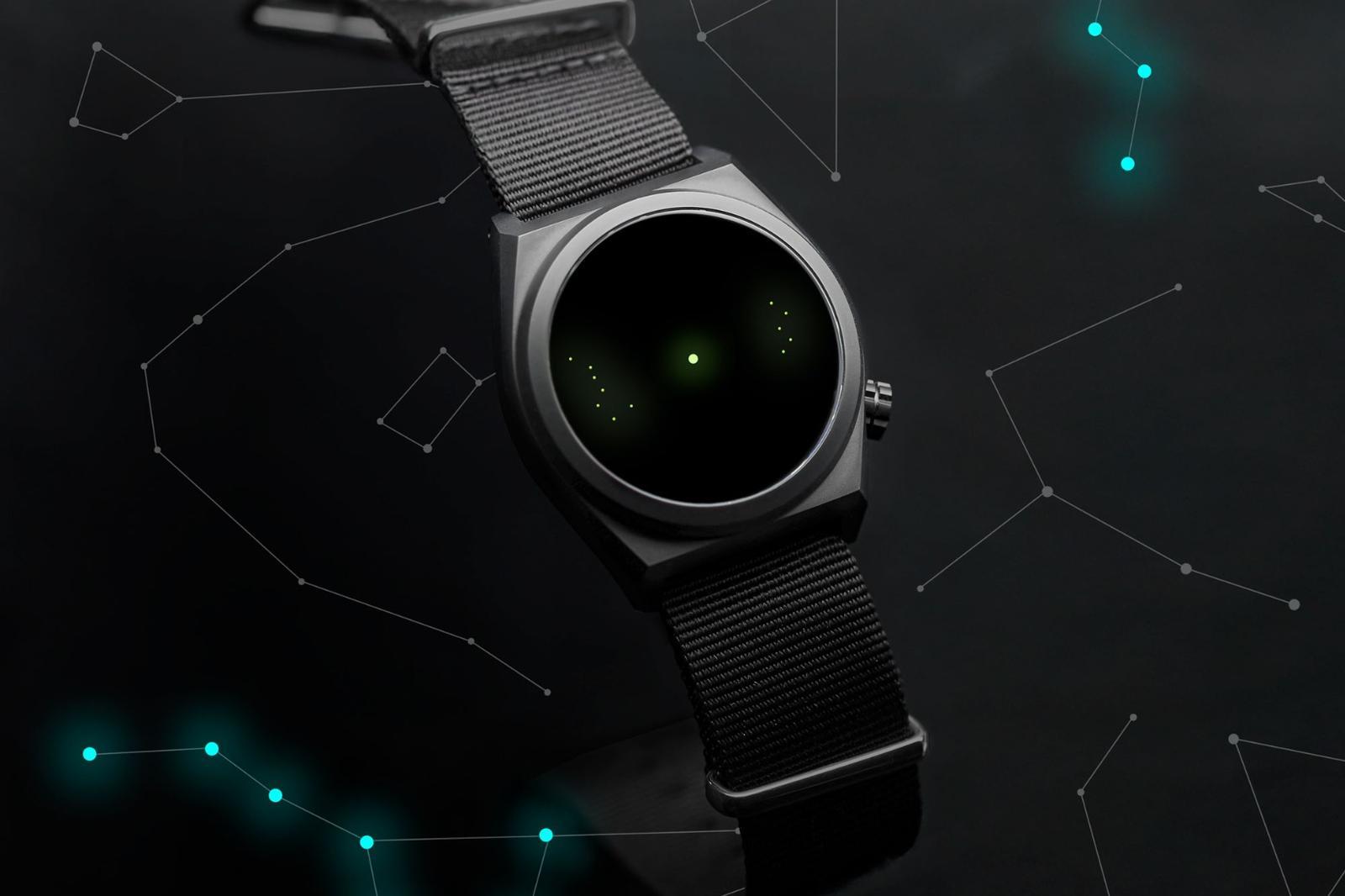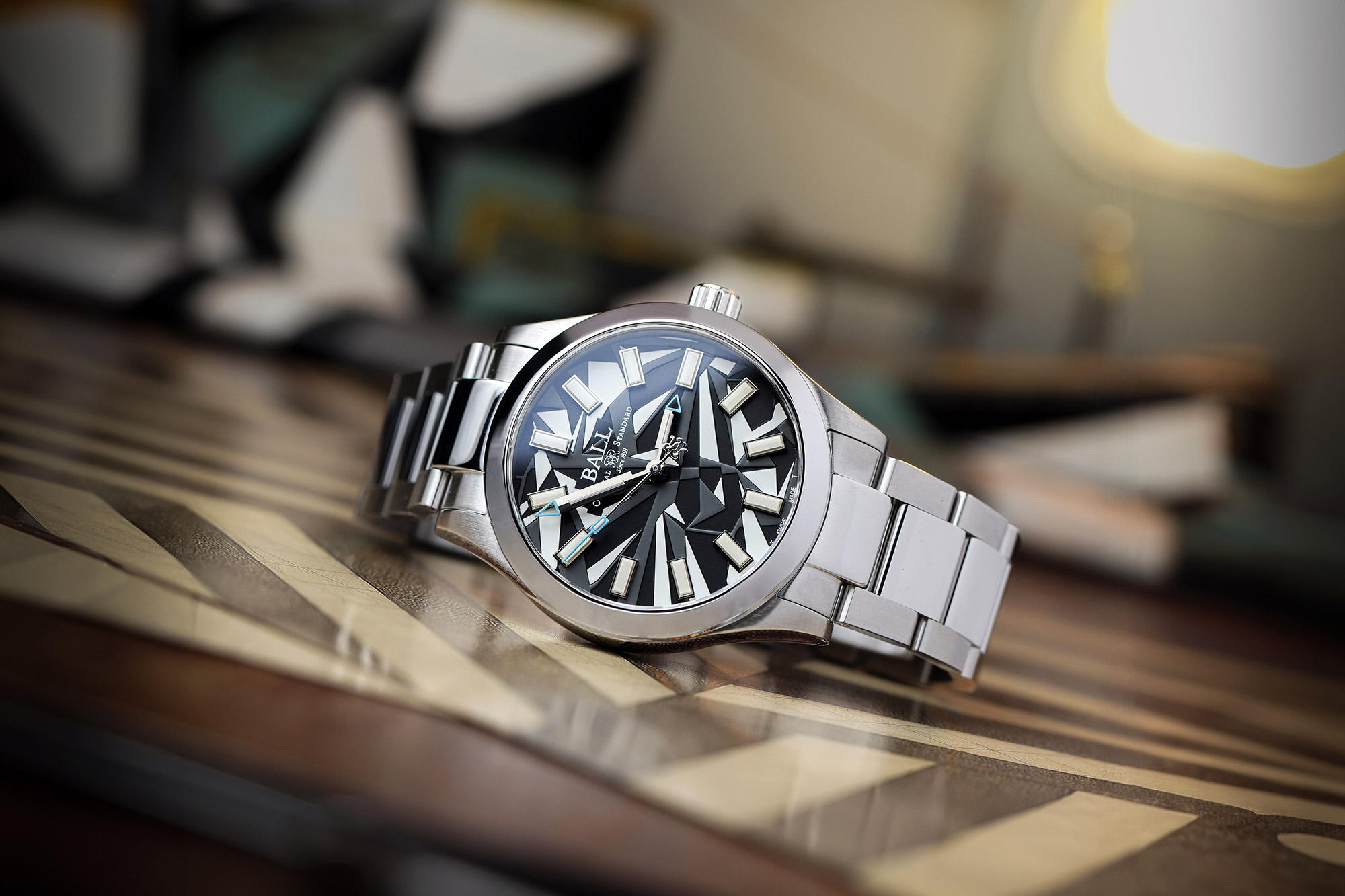


Last year, we did something big: we created a watch. Granted, we’re not the first media company to collaborate on a timepiece. You could argue that it happens perhaps too often. But with the Dune Shoreline we not only created a fantastic-looking limited edition, but one that went on to become a full Christopher Ward collection. There’s been a big question hanging over us ever since though: what’s next?
How does one follow up a sell-out success like the Shoreline? And what was it about the watch that struck a chord? Well for us, it was three things: a cool dial, a value proposition and a uniquely British idea. And so we spent the past year talking to various watch brands, coming up with various designs and while many of them are still in the pipeline, we can finally present what we’ve been working on: The Ball x Oracle Time Engineer II Dazzle.

Before we get too much into the design, it’s worth exploring why we decided to work with Ball. For anyone that owns one they’re invariably a favourite, big, chunky tool watches that score as big on value-for-money as they do build quality. For anyone else however they tend to go under-the-radar as one of (at least in our opinion) the most underrated of Swiss brands. So first, a short history lesson.
While it might not seem it given how most trains in the UK run, the railway and timekeeping have been inextricably linked throughout history. And it’s not just for the risk of annoying passengers either; chronometry on the railway can be a matter of life and death. Unfortunately, back in late 1800s America, the death came first.
In 1891, the watch of the train conductor stopped for four minutes, just outside of Cleveland, Ohio. Four minutes isn’t a great amount in the grand scheme of the universe; at a railway crossroads, it’s vital. Because four minutes after the train’s scheduled time was when a fast mail train would be heading through the same stretch of track.
As it was, the Great Kipton Train Wreck was a disaster that shook up the nascent Great American Railroad with absolutely devastating imagery of the wrecked timber carriages. They realised they needed something beyond whatever uncertified pocket watches the conductors had to hand – and enlisted the help of Webb C. Ball as Chief Time Inspector to make things right.

Mr. Ball had already been a bit of a timekeeping influence in Cleveland. The then-jeweller was the first to use the signals from the US Naval Observatory to keep civilian timekeeping to a much higher standard than the average dandy needed. He evidently already understood the need for chronometric precision; he just needed to apply that standard to the entire railroad. Easy, right? Thus, the Ball watch company was forever linked to the USA’s railway system.
At the time, Ball was doing what most jewellers of the era did and re-casing third-party movements. Think Elgin, Hamilton and Waltham, back when there was some serious watchmaking infrastructure in the USA. But the prestige of railway chronometers evidently struck a chord – as did the phrase ‘On the Ball’, which the watchmaker may or may not have coined. I like to think they did.

Fast-forward to today and modern Ball is a lot different from those early days of railroad watches. Sure, the Trainmaster has a railroad heritage-flavoured name, and some references ripped straight from pocket watch layouts, but there’s nothing classical about names like the Engineer Hydrocarbon Submarine Warfare, with dimensions that more than live up to the name. But at their core they still have the engineering-led approach that led to solid, reliable and accessible watchmaking across the railways. Who better to build a watch with? That all brings us back to the Engineer II Dazzle and where early Ball used the navy for timekeeping, we’ve used it for inspiration.

At the drawing board we knew we wanted a few things from the watch. First, we wanted something that tied into Ball’s historical love of novel engineering. We also wanted something typically British. Finally, it needed to be something Ball has never done before. If it tied into Ball’s history all the better – perhaps, for example, something naval, given Ball’s early chronometric reliance on the old US Naval Observatory. That’s where we hit upon the idea of Dazzle Camo – or Razzle Dazzle, if you feel the need to American it up.
Dazzle Camo has a fun place in naval history. In 1917, British merchant vessels were being mercilessly targeted by German U-boats. This was nearly two decades before radar, so there wasn’t much the ships could do to stop them except try camouflage. Zoologist John Graham Kerr proposed taking inspiration from wildlife, the zebra specifically, but blending those colours into the scenery with shading – guns painted grey on top to white below would appear invisible on the horizon. It was a novel idea, but one that would have varying impact in different lightings.
Marine painter Norman Wilkinson however saw the grain of another idea in there, leaning on the disruptive side of things. He realised that with the right abstract shapes and lines in the right places, you could obfuscate the various planes of a ship. You tricked the eye into not just missing the details, but finding it hard to even tell what direction it’s pointing in. The ship itself wasn’t meant to blend in, it was just meant to be confusing to look at.
The idea stuck with the admiralty of the British navy and soon Wilkinson was in charge of the Dazzle Section, housed in the Royal Academy of Arts. Countless variations on Dazzle patterns were trialed on models before being painted on hundreds of ships, filling dockyards with geometric, eye wrenching patterns. Every ship had a unique version of the technique and no two were ever alike. It was a surprising creative outlet in a time of war.

Did it work? It’s hard to tell. The camo certainly did confuse the eye, back when torpedo crews were eyeballing their targets through periscopes. And at the very least it had a huge effect on crew morale on the painted ships. But as time moved on and technology advanced, out with the old manual rangefinders and in with electronics. While Dazzle Camo did make an appearance in WWII, it wasn’t quite the protection it once was. It didn’t take long before those fantastic hull patterns were painted over in admiral grey.
Dazzle camo was a historical anomaly for sure, but one that perfectly encapsulates that British approach to design, that out-of-the-box (and some might say out-of-their-mind) thinking. We absolutely loved it and we knew we wanted Norman Wilkinson’s contribution to naval history interpreted in a watch.

Like the Shoreline before it, the dial is where the action is. The sharp, fractured pattern of triangles has been embossed to help the different shapes stand out more, in shades of white, grey and black just like the original dazzle camo concept. The specific pattern isn’t tied to a historical ship or anything quite that concrete. After a lot of trial and error, it is however the version that best suited the smaller, rounder space of a watch dial. It’s more in line with the kind of camo that concept cars use to hide their aerodynamics on test tracks, taking the same idea and modernising it.

To add a bit of colour, we tipped the hands in an icy sky blue – fitting for a nautically-themed timepiece. While you might mistake the various indexes for solid blocks of lume, they’re much more interesting than that. Unlike other watchmakers Ball actually uses radioactive H3 tritium gas in place of standard Superluminova. These self-illuminating tubes of science don’t need sunlight to charge and glow brighter than anything Black Badger works with. They’re a Ball signature and while they’re not the main reason we love the brand, they’re certainly part of it.

The best thing about H3 gas tubes is that the glass can easily be coloured. Ball in fact have some seriously cool rainbow dials that only come alive in the dark. On the Engineer II Dazzle we were slightly more reserved: a sky-blue glow across the hands and the 12 o’clock hour marker (matching those icy blue tips) and a clean, nautical white across the rest. Fair warning, this is a watch you might want to keep in a drawer rather than a bedside table. Unless you’re in need of a nightlight at any rate.
Between the striking camo pattern and self illuminating indexes, we wanted the dial to do the talking, so we opted to dazzle up one of Ball’s more streamlined pieces. One of Ball’s most successful lines in recent years is the Engineer III Marvelight, the brand’s chunky alternative to the Rolex Oyster Perpetual. It felt like the perfect canvas to work with. In fact, that was where we initially started, but we wanted something slimmer – which we found in the earlier Engineer II.

The result is 40mm of stainless steel, a relatively svelte thickness of 11.5mm and a water resistance of 100m. In terms of dimensions, this is a daily wearer if ever there was one. Hell, you can put it through some serious knocks and thanks to its 5,000 G shock resistance, it’ll come out swinging the other side. The main construction difference between this and other Ball watches however is that we’ve foregone the soft iron inner case in favour of an exhibition caseback – a rarity for Ball. But given it’s showing off Ball’s COSC-certified, RR1101-C movement it’s worth not being able to wear it in an MRI machine.
Fit on a solidly built stainless steel bracelet, the Engineer II Dazzle is a long way from those railroad-standard pocket watches from the late 1800s. But it draws on the same engineering prowess that has made modern Ball one of the unsung heroes of modern watchmaking – just with what we consider a very OT twist. And while we do of course want our 100-piece limited edition to do well – and with a value-driven price tag of £2,480, we’re expecting it to – we’re hoping it also gets more eyes looking at just what Ball can do. More eyes, you could say, on the Ball.

The Ball x Oracle Time Engineer II Dazzle will go on sale 11th June exclusively for Oracle Time members, before going on general sale 14th June at Hands On Horology, our 40-brand extravaganza of a watch show. To avoid disappointment, become a member to get priority access to this and future collaboration watches, ten print issues a year and many more benefits besides.
Price and Specs:
Model:
BALL
x Oracle Time Engineer II Dazzle
Ref:
NM9016C-S8C-BK
Case:
40mm
diameter x 11.5mm height, 904L stainless steel, anti-reflective sapphire crystal front and sapphire exhibition caseback, screwed-in crown
Dial:
Embossed
dazzle-camouflage pattern, 15 micro-gas tubes on hands and dial for night-reading
Water resistance:
100m
(10 bar)
Movement:
BALL
calibre RR1101-C, automatic, COSC-certified chronometer, shock-resistant 5,000 Gs, anti-magnetic 4,800 A/m
Frequency:
28,800
vph (4 Hz)
Power reserve:
56h
Functions:
Hours,
minutes, sweep seconds
Strap:
Stainless
steel bracelet (blue NATO strap available separately)
Price:
£2,480
(inc. VAT), limited to 100 pieces
More details at Ball Watch.
For more information, visit our membership page. If, for any reason, you choose not to subscribe but still want to be informed about any leftover watches or allocations, please enter your email address below.
Oracle Time
